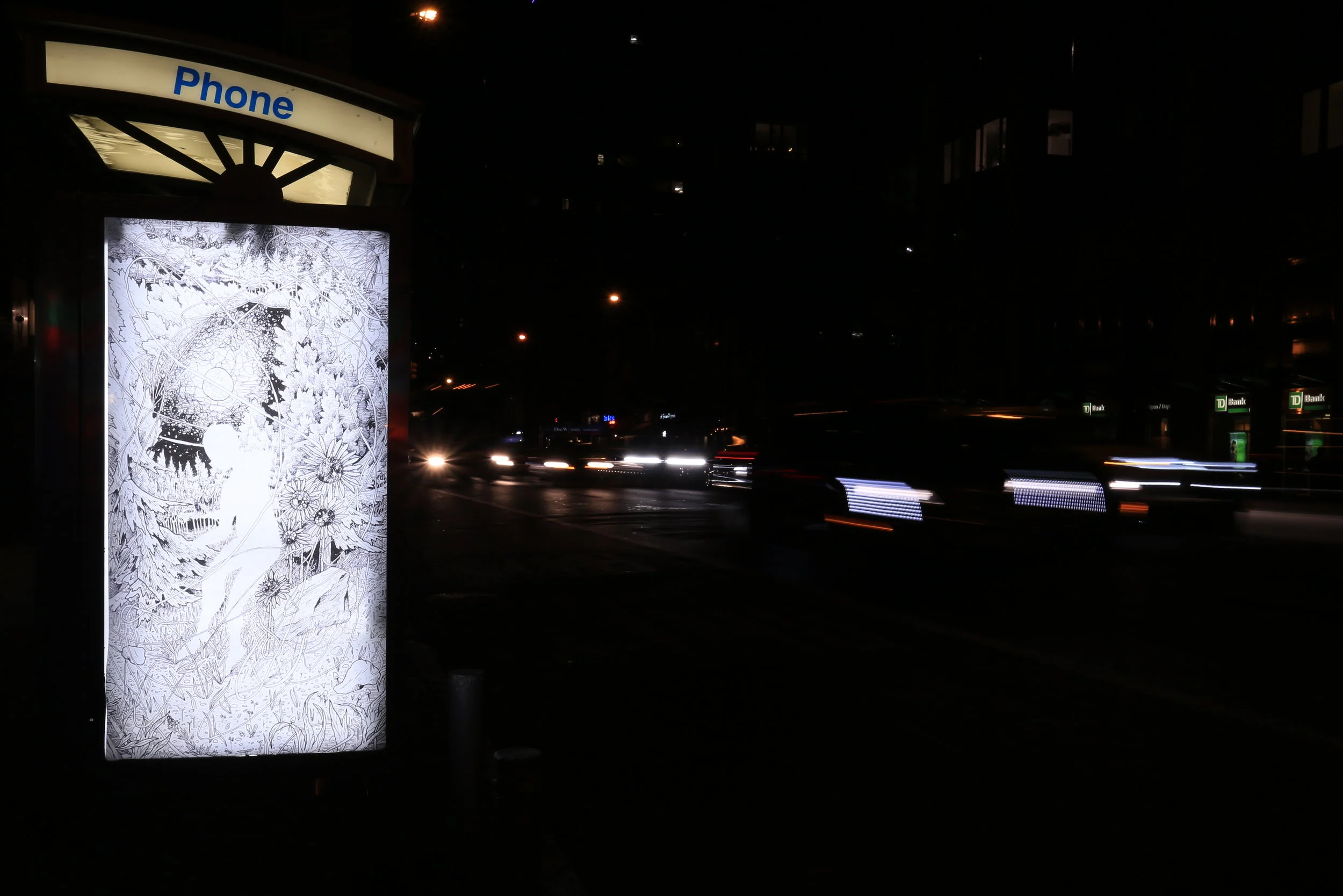I HATE THE SOUND OF SILENCE by Cheryl Pope. Photo by Luna Park.
This week's installation is on a payphone with three active advertisements, but zero functioning phones, so it's only fitting that it's where we installed Cheryl Pope's I HATE THE SOUND OF SILENCE. Here's what she had to say about the piece:
"I HATE THE SOUND OF SILENCE is the voice of a Chicago Youth responding to issues of inequality, police brutality, political corruption and resulting violence in the United States. Elevating this statement to a Championship Statement increases the volume, weight, and physicality of this lived experience and feeling of anger, pain and frustration.
"I selected this statement for ART IN AD PLACES and specifically on the telephone booth for its relationship to connection, conversation, and public accessibility. When I was young I saw the public phone as a resource if needed to call for help, a direct line to 911 or the operator. The deactivation of these public, democratic resources is a metaphor of the silence, the survival of the individual rather than a sense of a communal support system.
"It also pushes against the phone as an object that keeps us distracted, our inability to be silent, to confront, to be alone with ourselves. Our fear of what might be seen, heard, or felt within the silence."
The site of Cheryl's piece, because none of the phones there actually work, is a great example of what payphones in NYC have become: no longer a public service, they are only venues for advertising. Why should we, as people who have to walk by these booths every day, put up with that encroachment in public space with no benefit? Well, at Art in Ad Places, we would say that we shouldn't put up with it.
As an aside, it's great to have our first artist from Chicago, co-curator RJ Rushmore's hometown.
I HATE THE SOUND OF SILENCE by Cheryl Pope. Photo by Luna Park.











